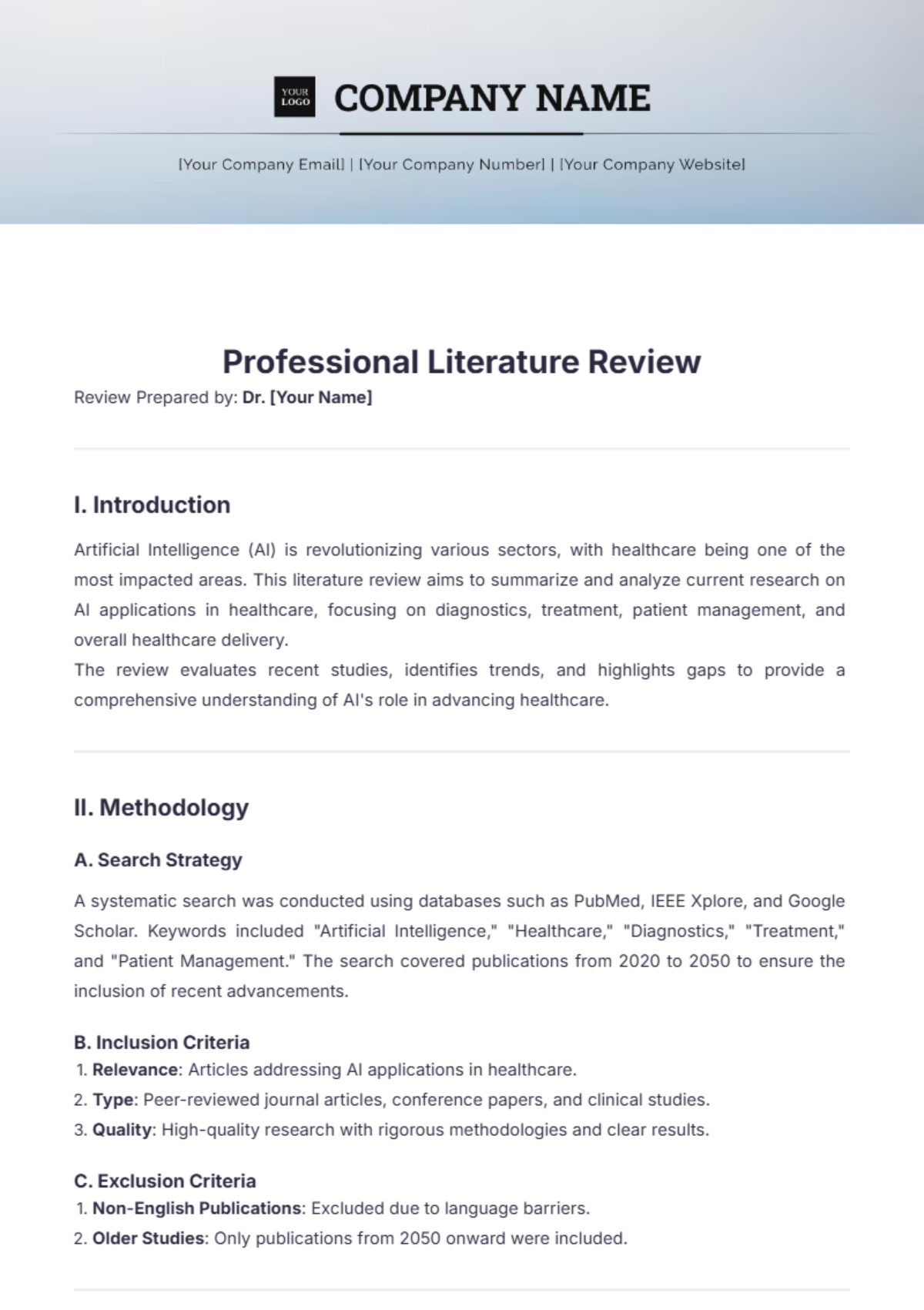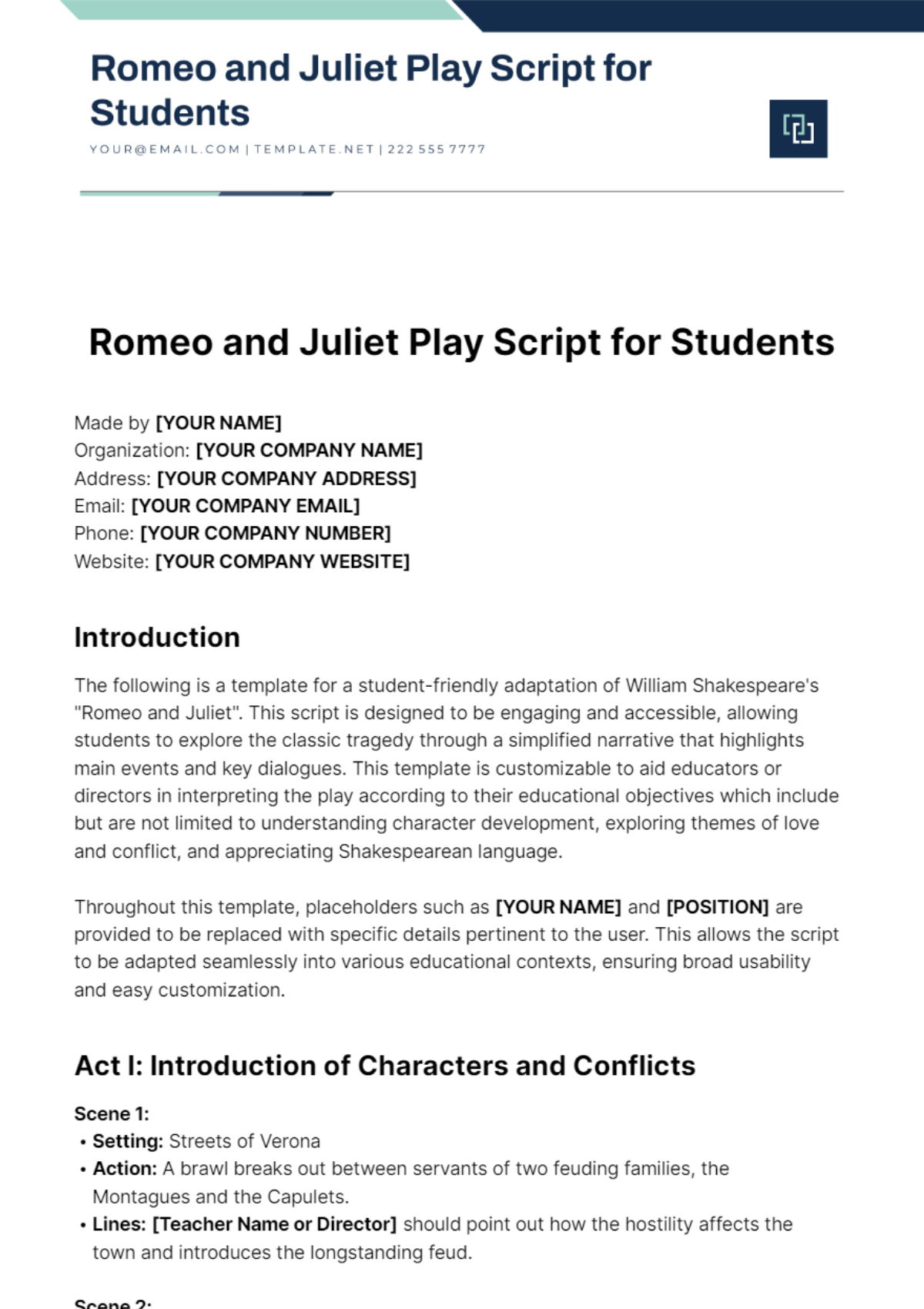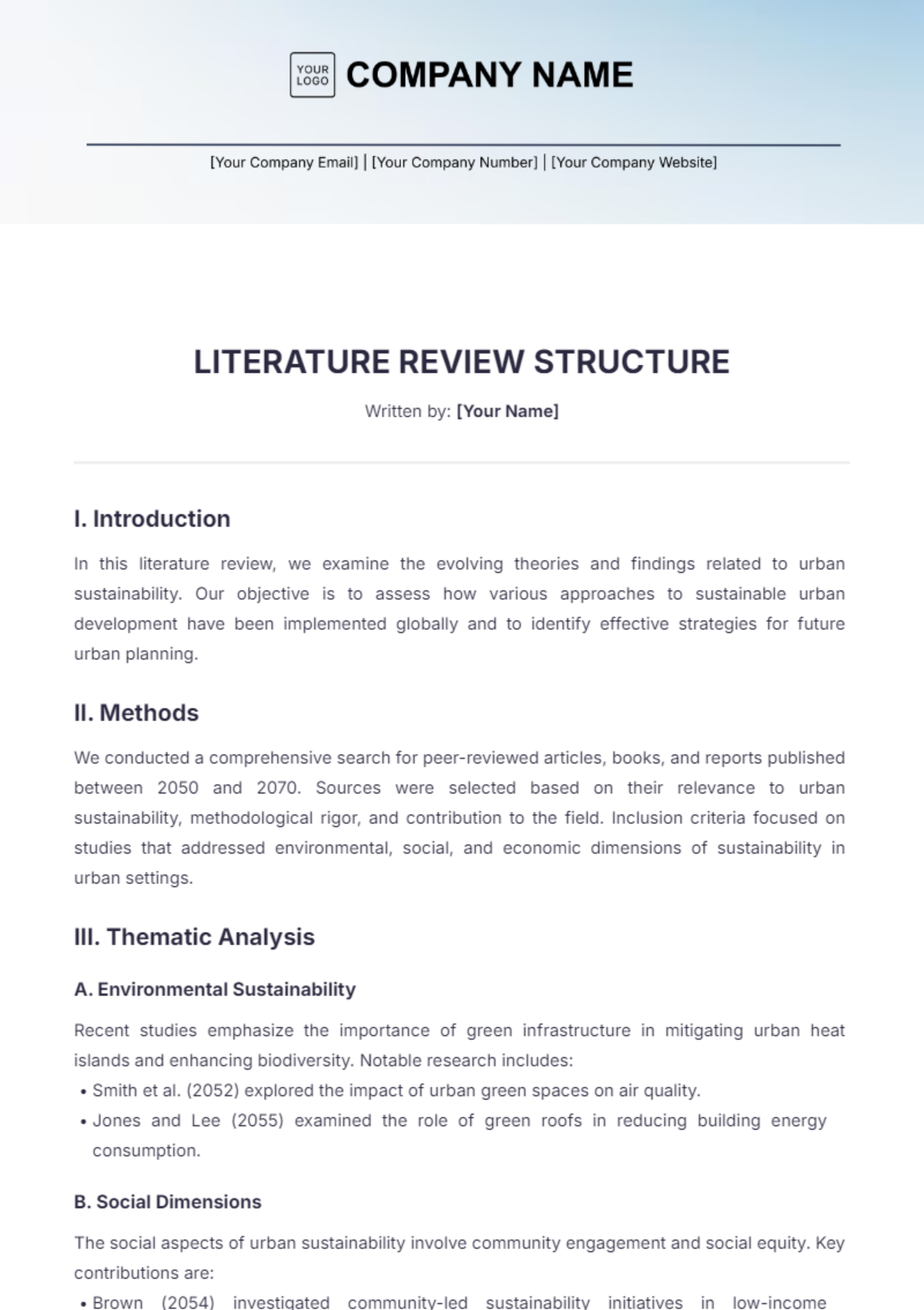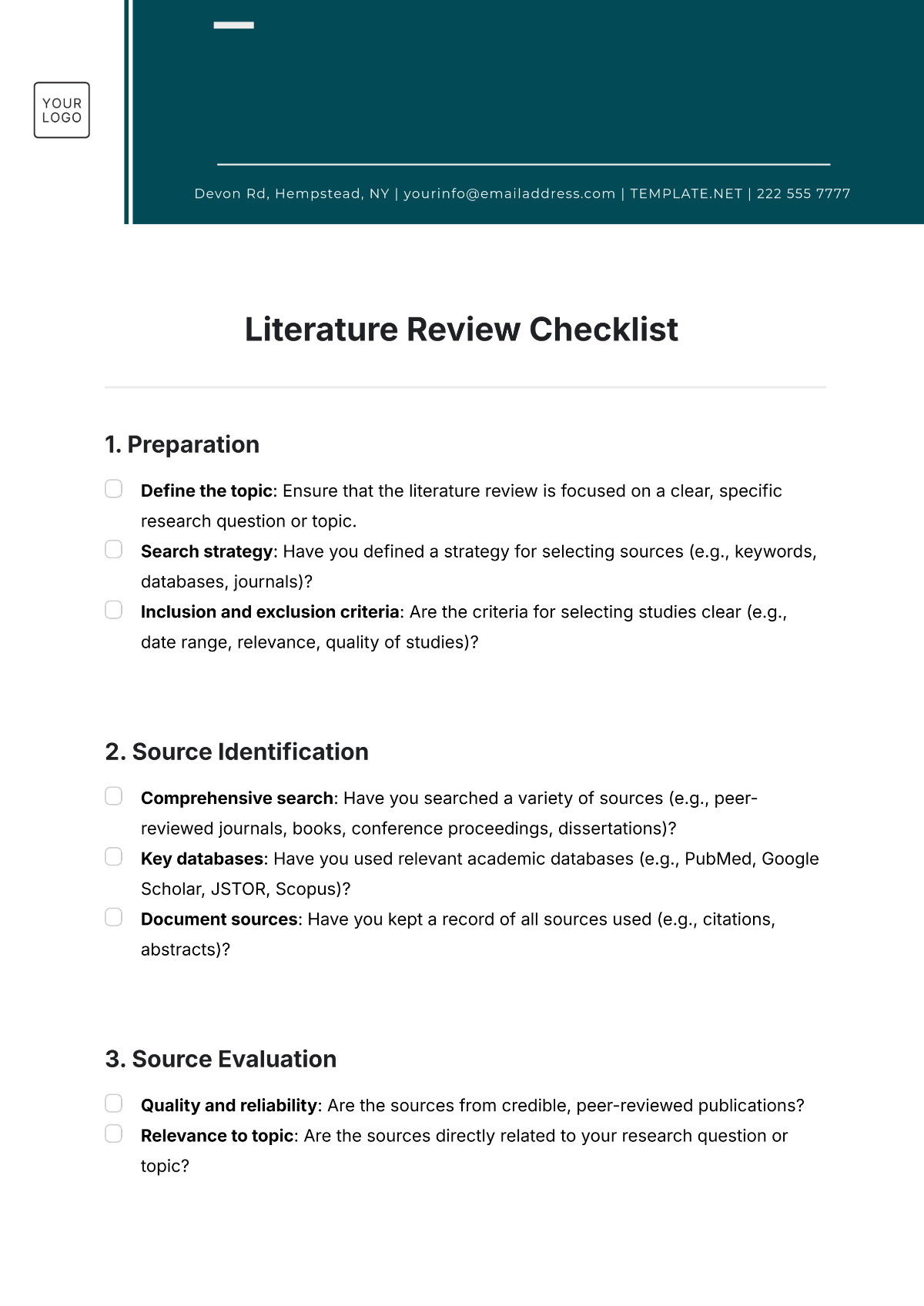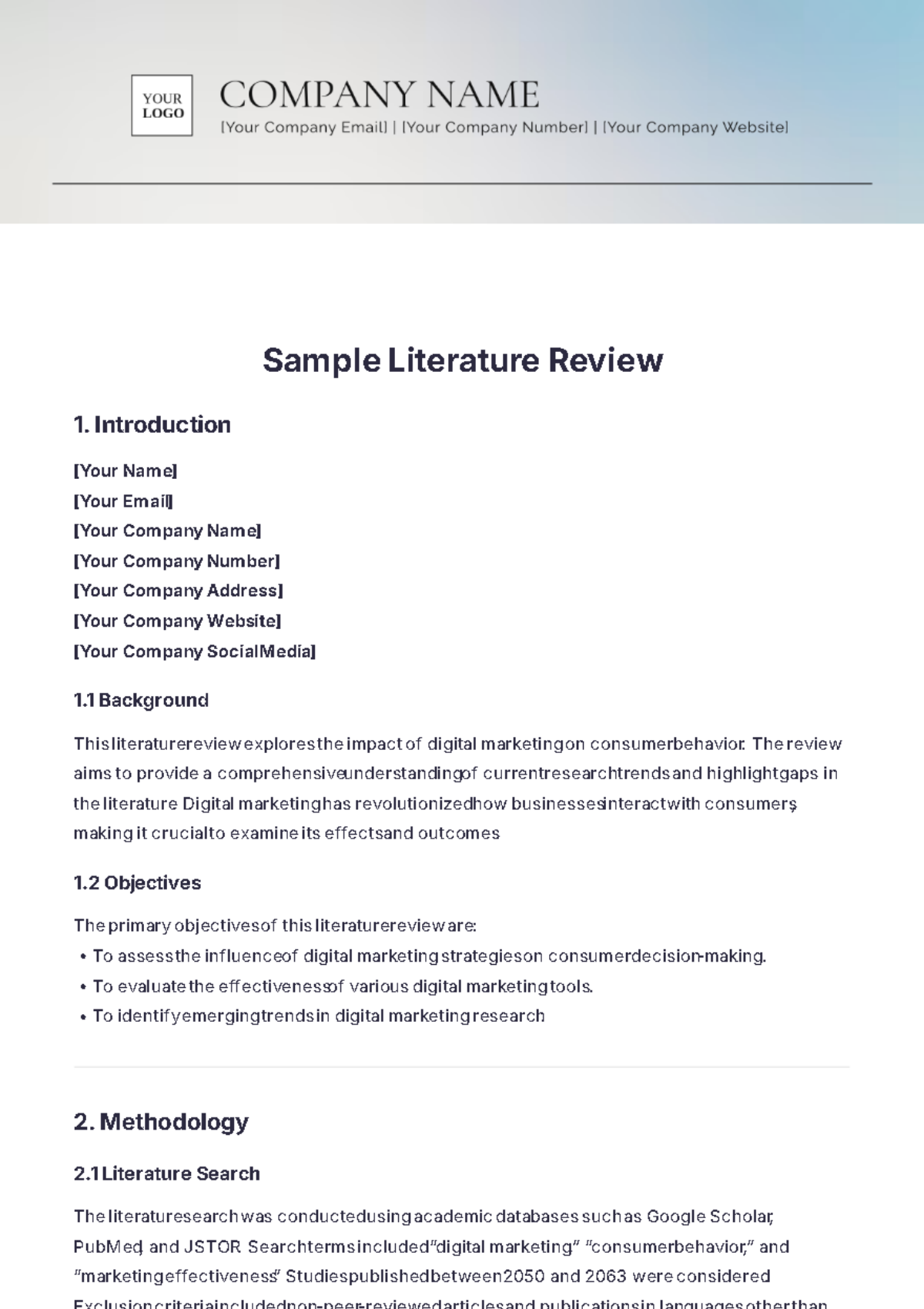Literature Review Structure
I. Introduction
In this literature review, we examine the evolving theories and findings related to urban sustainability. Our objective is to assess how various approaches to sustainable urban development have been implemented globally and to identify effective strategies for future urban planning.
II. Methods
We conducted a comprehensive search for peer-reviewed articles, books, and reports published between 2050 and 2070. Sources were selected based on their relevance to urban sustainability, methodological rigor, and contribution to the field. Inclusion criteria focused on studies that addressed environmental, social, and economic dimensions of sustainability in urban settings.
III. Thematic Analysis
A. Environmental Sustainability
Recent studies emphasize the importance of green infrastructure in mitigating urban heat islands and enhancing biodiversity. Notable research includes:
Smith et al. (2052) explored the impact of urban green spaces on air quality.
Jones and Lee (2055) examined the role of green roofs in reducing building energy consumption.
B. Social Dimensions
The social aspects of urban sustainability involve community engagement and social equity. Key contributions are:
Brown (2054) investigated community-led sustainability initiatives in low-income neighborhoods.
Garcia and Patel (2058) analyzed the effectiveness of participatory planning in fostering social cohesion.
C. Economic Considerations
Economic factors play a crucial role in sustainable urban development. Relevant studies include:
Miller et al. (2060) assessed the cost-benefit analysis of sustainable transportation projects.
Thompson (2063) evaluated the economic impact of energy-efficient building codes on local economies.
IV. Summary of Findings
Our review reveals a consensus on the importance of integrating environmental, social, and economic dimensions in urban sustainability efforts. Effective strategies identified include the adoption of green infrastructure, community engagement, and supportive economic policies. However, variations in implementation across different contexts highlight the need for localized approaches.
V. Gaps in the Literature
Despite the extensive research on various aspects of urban sustainability, there is a notable gap in studies examining the long-term impacts of integrated sustainability strategies on urban resilience. Additionally, more research is needed on the effectiveness of sustainability initiatives in rapidly growing cities.
VI. Conclusion
In conclusion, the literature on urban sustainability underscores the multifaceted nature of effective urban planning. Future research should focus on longitudinal studies and the adaptation of strategies to diverse urban contexts. Policymakers and urban planners can benefit from a holistic approach that incorporates the insights gained from this review.
VII. References
Smith, J., Brown, R., & Green, A. (2052). The Impact of Urban Green Spaces on Air Quality. Journal of Environmental Science.
Jones, M., & Lee, K. (2055). Green Roofs and Energy Efficiency: A Comprehensive Review. Urban Ecology Review.
Brown, T. (2054). Community-Led Sustainability Initiatives in Low-Income Areas. Social Policy Journal.
Garcia, L., & Patel, N. (2058). Participatory Planning and Social Cohesion. Urban Studies.
Miller, D., Smith, L., & Thompson, H. (2060). Economic Analysis of Sustainable Transportation Projects. Transportation Economics.
Thompson, R. (2063). Economic Impacts of Energy-Efficient Building Codes. Building Economics Review.













